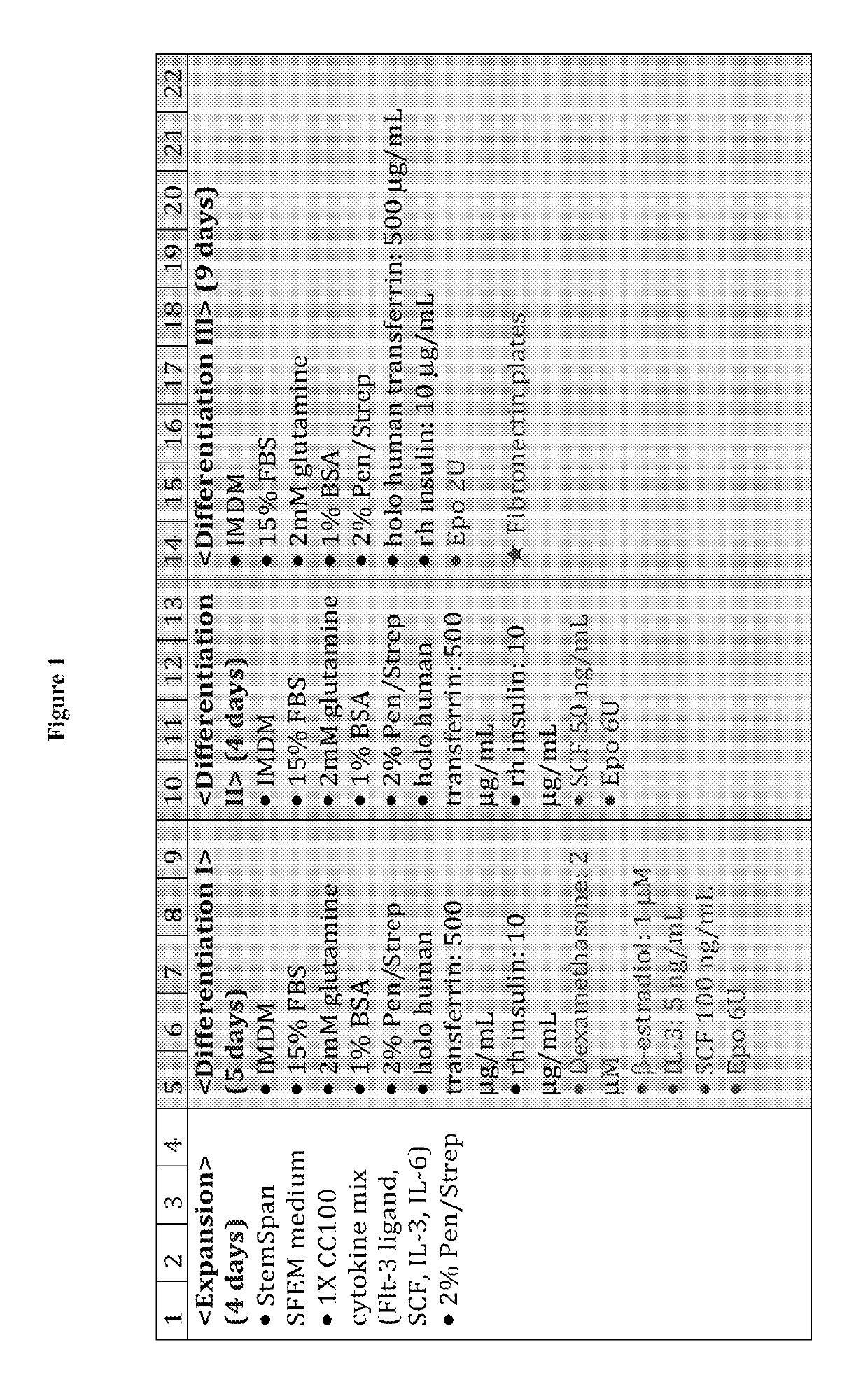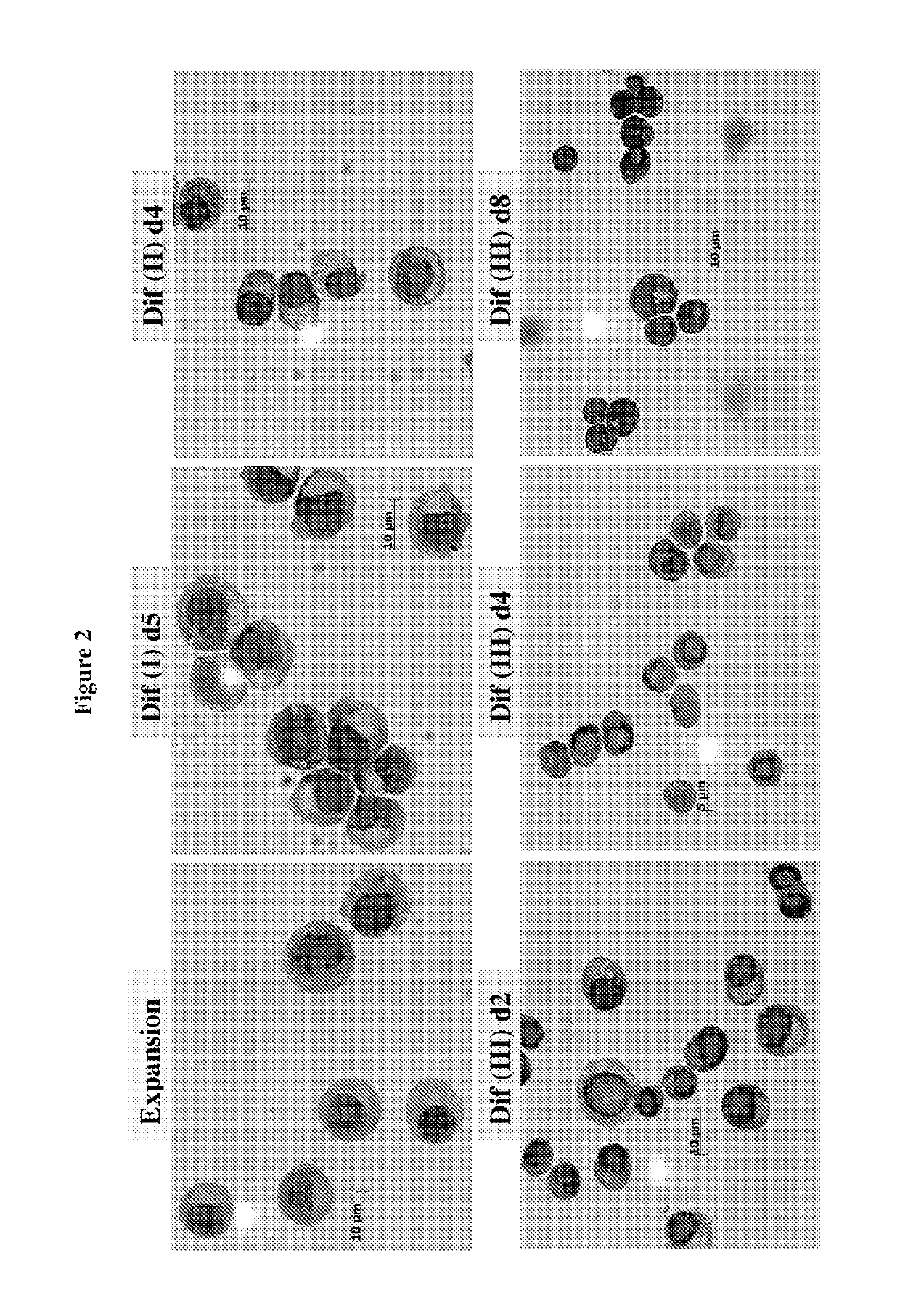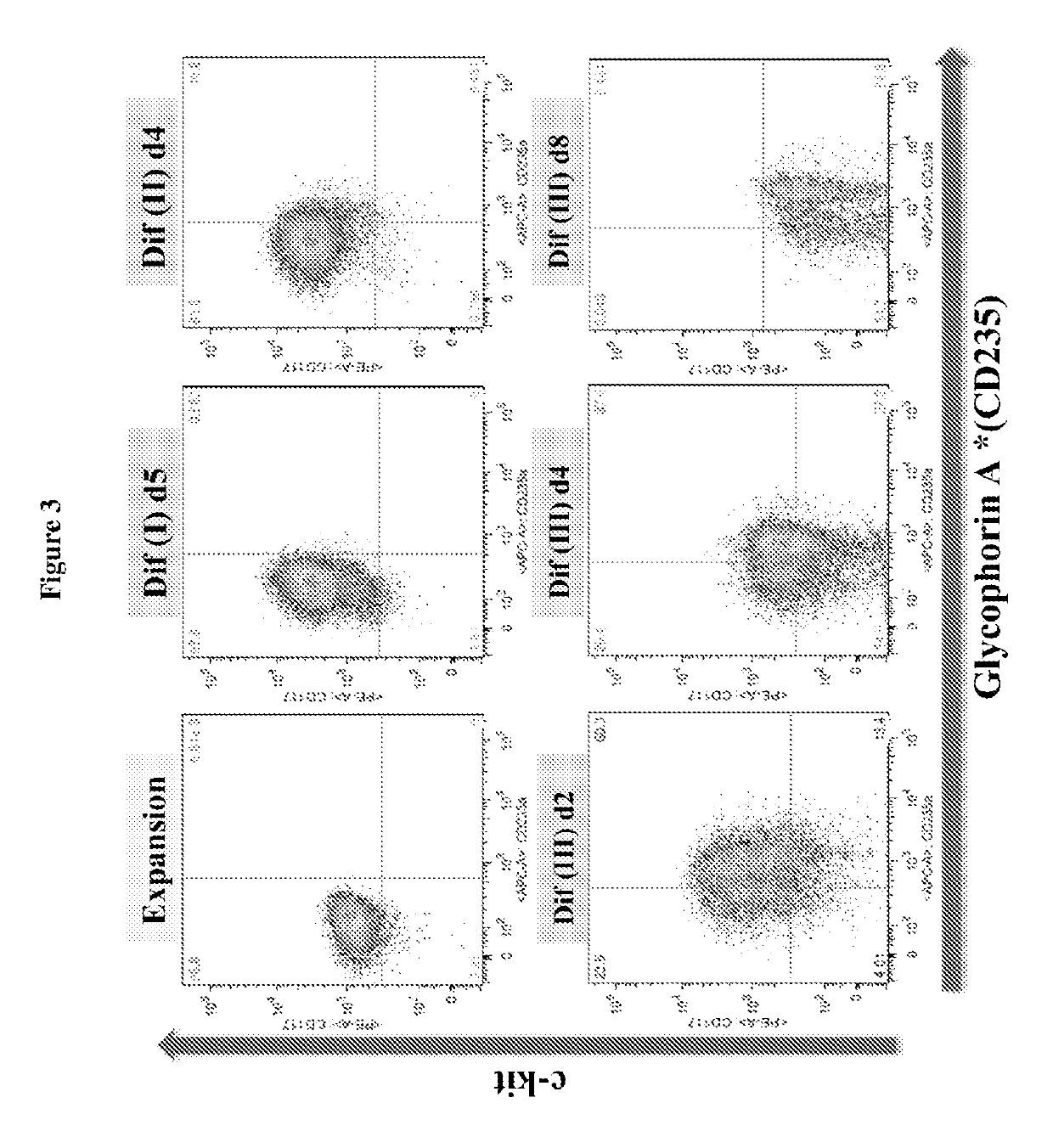In vitro production of red blood cells with proteins comprising sortase recognition motifs
a sortase recognition and in vitro technology, applied in the field of in vitro production of red blood cells with proteins comprising sortase recognition motifs, can solve the problems of limited capabilities of both approaches
- Summary
- Abstract
- Description
- Claims
- Application Information
AI Technical Summary
Benefits of technology
Problems solved by technology
Method used
Image
Examples
example 1
In Vitro Production of Human Mature Enucleated Red Blood Cells
[0193]Human peripheral blood G-CSF mobilized hematopoietic stem / progenitor cells enriched for CD34+ are purchased from Fred Hutchinson Cancer Research Center (FHCRC), Seattle. Cells are thawed according to the FHCRC protocol. The human CD34+ (hCD34+) blood cells were differentiated into mature enucleated red blood cells by a method composed of 4 phases in 21 days: (a) Expansion, (b) Differentiation I (“Dif I”), (c) Differentiation II (“Dif II”), and Differentiation III (“Dif III”) illustrated in FIG. 1, and described below.
[0194]In the Expansion phase, the human CD14+ blood cells were cultured in Expansion medium (StemspanSFEM, CC 100 cytokine mix, which includes Flt-3 ligant, SCF, IL-3 and IL-6, and 2% penicillin-streptomycin) at 105 cells / mL from Day 1˜4. After expansion, cells are subsequently cultured in IMDM-based erythroid differentiation medium supplemented with different cytokines in Dif I, II and III. The medium ...
example 2
Conjugation of Functional Probes to Engineered Red Blood Cells Via Sortase Reaction
[0201]RBCs lack a nucleus and at their mature stage cannot be genetically modified. Therefore erythroid precursors were genetically engineered to express sortase-modifiable proteins that are retained on the plasma membrane of mature RBCs. In this study, two sortase-modifiable membrane proteins were expressed in erythroid progenitors, Kell and Glycophorin A (GPA):[0202](1) The blood group antigen Kell is a type II membrane protein with an extracellularly exposed C-terminus and was selected as a target for C-terminal labeling.[0203](2) GPA, a type I membrane protein with its N-terminus extracellularly disposed, is the most abundant protein on the RBC surface and was chosen for N-terminal modification.
Materials and Methods
[0204](i) Plasmids
[0205]The coding sequences of human, mouse glycophorin A (GPA) and Kell were obtained from NCBI ref sequence NM_002099.6, NM_010369.3, and NM_000420.2, respectively. T...
example 3
Conjugation of an Antibody to Engineered Red Blood Cells for Cell Type-Specific Targeting
[0256]One potential application of modified RBCs is to provide them with a targeting moiety that would enable their delivery (and attached or incorporated payload) to particular tissues or cell types. Such targeting may be accomplished by installation of proteins or other entities, such as ligands for specific receptors that can participate in specific recognition of the intended target.
[0257]To test conjugation of a functional protein onto the surface of RBCs, a sortaggable alpaca-derived single domain antibody was used. This antibody is specific for murine Class II MHC molecules, VHH7-LPETG (SEQ ID NO: 44), and was covalently attached it to red cells with 3G-myc-hGPA on their surface. As shown by the shift in gel mobility of the 3G-myc-hGPA, the sortagging reaction is stoichiometric (FIG. 25A).
[0258]A B cell-red blood cell binding assay was performed as follows. B cells were isolated from eith...
PUM
 Login to View More
Login to View More Abstract
Description
Claims
Application Information
 Login to View More
Login to View More - R&D
- Intellectual Property
- Life Sciences
- Materials
- Tech Scout
- Unparalleled Data Quality
- Higher Quality Content
- 60% Fewer Hallucinations
Browse by: Latest US Patents, China's latest patents, Technical Efficacy Thesaurus, Application Domain, Technology Topic, Popular Technical Reports.
© 2025 PatSnap. All rights reserved.Legal|Privacy policy|Modern Slavery Act Transparency Statement|Sitemap|About US| Contact US: help@patsnap.com



